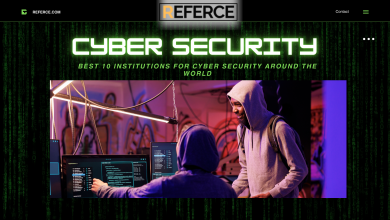Distance Degree: Key to Flexible Learning
Well, today, as distance learning has finally come of age and is gradually making a place for itself in this fast-moving modern world, it seems that taking part in these programs is most likely going to be the only way for different learners to pursue their school while ensuring enough flexibility at the same time. Hence, technology-supported programs have opened up access like nothing else before. In retrospect, let’s now scrutinize the way through which distance degrees are unlocking opportunities for learners worldwide.
1.Flexibility Redefined
Anytime, Anywhere Learning
Degrees delivered through distance learning leave the student with total freedom as to where to study and the best time to deliver his/her assignments. In turn, the student can access course outlines and attend lectures at the most convenient time for him/her, be it at the very break of dawn, deep in the night, or at the weekends. This range of flexibility supports other work, family, and health commitments that may previously have precluded many lifestyles from engaging fully in education.
Personalized Study Schedules
Distance learning, therefore, comes with a number of benefits that cut across. Some of the prominent ones to consider include; flexibility, convenience, and the ability of making your course at a pace that can be easily accommodated. The program is designed in a such a way that every student can design a study routine that can best go in line with their circumstance. This reduces most of the stress that come visiting a normal school setting.
Accessibility for All It offers an avenue for access to education that has never been before. Persons living in places in the middle of nowhere, the disabled, and people with multiple roles, among other positions, can be on the periphery of higher education without necessarily moving from the places they are or making endless trips to various education facilities. It will put education in the right place as a right to everyone, no matter where and what conditions they live in.
Adaptive Learning Environments
An online and state-of-the-art, distance-degree platform one works online through a modern adaptive learning environment. It therefore is tailored to the pace of the learner, the learning style, and preference since they get to decide on some kind of a curriculum. Some of this tools such as multimedia resources, virtual simulations of opportunities and collaborative projects lead students to become involved in the process of learning to understand and retain the course content better. This instant real-time feedback and individual attention by a trained instructor do cause the learning process to be enriched during the process.
Career-Centric Education
These include the development of critical hands-on skills and knowledge, which are important on the modern job market. Such include varied disciplines with specialized concentrations of curriculum that are in line with the demands of industries. This offers students the enablement for internship and practicum opportunities, networking, etc., which help to mold them professionally in such a way that they are in a better position than others. Conclusion: Empowering Learners, Transforming Lives In conclusion, flexibility redefined through distance degree represents a paradigm shift in education. Indeed, technology hands the students inhabiting these programs with the power to guarantee that this is achieved; that they are not stopped from attaining what they want to achieve. Career advance, independent personal growth, or even lifelong learning, at that; distance degrees are running as the new fuel. It is for such a new environment for flexibility that doors are open, limitless opportunities are offered, and a brighter future paved for the learner.
Read Also:- Top 10 Motivational Movies for Students – Inspirational Movies
2. Technology Integration
Virtual Classrooms
At the heart of technology integration in distance degrees lies the concept of virtual classrooms. These digital learning environments replicate the interactive nature of face-to-face instruction while offering added flexibility and accessibility. Through video conferencing, live chats, and discussion forums, students can engage with peers and instructors in real time, fostering collaboration and active participation.
Multimedia Resources
Distance degrees leverage multimedia resources to enhance learning experiences and cater to diverse learning styles. From interactive presentations and simulations to video lectures and podcasts, these resources provide dynamic and engaging ways for students to interact with course content. Visual aids, animations, and audio recordings facilitate comprehension and retention, making complex concepts more accessible and relatable.
Interactive Tools
Interactive tools play a crucial role in facilitating student engagement and learning outcomes in distance degrees. Online quizzes, self-assessment modules, and virtual labs allow students to apply theoretical knowledge in practical contexts and receive immediate feedback on their progress. These interactive experiences promote active learning and critical thinking skills, empowering students to take ownership of their education.
Collaboration Platforms
Technology integration fosters collaboration among students and instructors, regardless of geographical barriers. Collaborative platforms such as Google Workspace, Microsoft Teams, and Slack enable seamless communication, file sharing, and project collaboration. Group discussions, peer reviews, and team-based assignments promote teamwork and communication skills essential for success in the digital age.
Adaptive Learning Systems
Adaptive learning systems use data analytics and machine learning algorithms to personalize the learning experience for each student. By analyzing individual learning patterns, preferences, and performance metrics, these systems deliver customized content and recommendations tailored to the unique needs of learners. Adaptive learning promotes self-paced learning, minimizes gaps in understanding, and maximizes student engagement and achievement.
Conclusion: Bridging Gaps, Building Bridges
In conclusion, technology integration has revolutionized distance degrees, bridging gaps and building bridges to a more inclusive and accessible education landscape. By leveraging virtual classrooms, multimedia resources, interactive tools, collaboration platforms, and adaptive learning systems, distance degrees offer dynamic and engaging learning experiences that empower students to succeed in an increasingly digital world. Embracing technology as a catalyst for innovation, educators can unlock the full potential of distance education and shape the future of learning for generations to come.
3. Equal Access
Overcoming Geographical Constraints
Geographical distance is no longer a hindrance to education with distance degrees. Learners residing in remote areas, rural communities, or regions with limited access to traditional educational institutions now have the opportunity to pursue higher education without the need for relocation or long commutes. By delivering course materials and instruction online, distance degrees bring education directly to learners’ fingertips, regardless of their location.
Flexible Learning Modalities
Traditional education often demands a rigid adherence to fixed schedules and structures, which may pose challenges for individuals with familial, professional, or personal obligations. Distance degrees offer flexible learning modalities that accommodate diverse lifestyles and commitments. Whether balancing work, childcare, or other responsibilities, learners can tailor their study schedules to suit their individual needs, enabling them to pursue education without sacrificing other aspects of their lives.
Financial Accessibility
The cost of higher education can be a significant barrier for many individuals, particularly those from low-income backgrounds. Distance degrees provide a more cost-effective alternative to traditional on-campus programs, eliminating expenses associated with commuting, campus housing, and other incidental costs. Additionally, many distance learning institutions offer financial aid, scholarships, and flexible payment options to make education more accessible and affordable for all learners.
Inclusivity and Diversity
Distance degrees foster a culture of inclusivity and diversity by welcoming learners from diverse backgrounds, cultures, and experiences. The virtual nature of online learning environments creates a level playing field where individuals of all ages, abilities, and socioeconomic statuses can participate and contribute to academic discourse. This diversity enriches the learning experience, promotes empathy and understanding, and prepares students to thrive in an increasingly interconnected global society.
Support for Underrepresented Groups
Distance degrees prioritize support for underrepresented and marginalized groups, including individuals with disabilities, minorities, and non-traditional students. Accessibility features such as closed captioning, screen readers, and adaptive technologies ensure that educational materials are accessible to learners with diverse needs. Moreover, targeted outreach programs, mentorship initiatives, and community partnerships help to address systemic barriers and provide additional support to students facing unique challenges.
Conclusion: Empowering Every Learner
In conclusion, distance degrees are not just about delivering education; they are about empowering every learner to reach their full potential, regardless of their circumstances. By breaking down geographical, financial, and logistical barriers, distance degrees ensure equal access to quality education for all individuals. As we continue to embrace the principles of inclusivity, diversity, and accessibility, distance degrees will play a pivotal role in shaping a more equitable and inclusive society where education is truly a universal right.
4. Overcoming Challenges
Self-Motivation and Discipline
One of the primary challenges in distance learning is maintaining self-motivation and discipline. Without the structure of traditional classroom settings, learners must proactively manage their time, set goals, and stay focused on their studies. Implementing strategies such as creating a dedicated study space, setting realistic deadlines, and practicing time management techniques can help distance learners stay motivated and disciplined throughout their academic journey.
Technological Issues
Technology glitches and connectivity issues can disrupt the learning process for distance learners. Whether it’s unreliable internet connections, software compatibility issues, or hardware malfunctions, technical challenges can be frustrating and disruptive. To mitigate these issues, learners should familiarize themselves with the technology platforms used in their courses, troubleshoot common problems proactively, and have alternative access plans in place, such as utilizing public Wi-Fi or accessing course materials offline when possible.
Isolation and Lack of Support
Distance learning can sometimes feel isolating, especially for learners accustomed to the camaraderie of traditional classrooms. Without face-to-face interactions with peers and instructors, distance learners may experience feelings of loneliness and isolation. Building a support network through online discussion forums, virtual study groups, and social media communities can help combat feelings of isolation and provide opportunities for collaboration, peer support, and mentorship.
Time Management and Balancing Responsibilities
Balancing academic responsibilities with work, family, and personal commitments can be a significant challenge for distance learners. Effective time management strategies, such as creating a detailed study schedule, prioritizing tasks, and setting boundaries between study time and personal time, can help learners strike a balance between their various obligations. Additionally, communicating openly with employers, family members, and other stakeholders about academic commitments and scheduling constraints can help manage expectations and reduce stress.
Maintaining Engagement and Focus
Staying engaged and focused in an online learning environment requires proactive effort and active participation. Distance learners may struggle with distractions, procrastination, and information overload, making it challenging to stay focused on course materials and assignments. Employing techniques such as the Pomodoro Technique (breaking study sessions into short, focused intervals), minimizing distractions (turning off notifications, finding a quiet study environment), and practicing mindfulness exercises can enhance concentration and productivity.
Conclusion: Triumphing Over Adversity
In conclusion, while distance learning presents its fair share of challenges, it also offers opportunities for growth, resilience, and personal development. By recognizing and addressing common obstacles such as self-motivation, technological issues, isolation, time management, and maintaining engagement, distance learners can navigate their educational journey with confidence and success. With perseverance, adaptability, and a supportive community by their side, distance learners can conquer any challenge and emerge stronger, more capable, and better equipped to achieve their academic goals.
5. Career Advancement
Specialized Skill Development
Distance degrees provide opportunities for individuals to acquire specialized skills and expertise in their chosen fields. Whether it’s gaining proficiency in emerging technologies, mastering industry-specific knowledge, or developing leadership and management abilities, distance learning programs offer tailored curricula designed to meet the demands of today’s job market. These specialized skills enhance individuals’ value proposition to employers and position them as competitive candidates for career advancement opportunities.
Flexibility for Working Professionals
One of the key advantages of distance degrees for career advancement is the flexibility they offer to working professionals. Many individuals who pursue distance learning programs are already employed and seeking to enhance their qualifications while continuing to work. Distance degrees allow these professionals to balance their academic pursuits with their professional responsibilities, enabling them to earn advanced credentials without interrupting their careers or sacrificing their income.
Networking and Professional Connections
Distance learning programs provide opportunities for individuals to expand their professional networks and make valuable connections within their industries. Through virtual networking events, online discussion forums, and collaborative projects, distance learners can interact with peers, instructors, and industry experts from around the world. These networking opportunities not only facilitate knowledge sharing and collaboration but also open doors to potential job opportunities, mentorship, and professional development resources.
Demonstrated Commitment to Continuous Learning
Earning a distance degree demonstrates a commitment to continuous learning and professional development, qualities highly valued by employers. Employers recognize the dedication and discipline required to balance work, life, and education commitments simultaneously. Distance learners who successfully complete their programs showcase their ability to manage time effectively, adapt to changing environments, and pursue personal and professional growth proactively, attributes that are attractive to prospective employers.
Access to Global Opportunities
Distance degrees provide access to a diverse range of educational institutions and programs from around the world. By pursuing a distance learning program, individuals can tap into global opportunities and access cutting-edge research, industry insights, and best practices from leading institutions and experts worldwide. This global perspective enriches individuals’ skill sets, expands their horizons, and prepares them to thrive in a globalized workforce.
Also Read this Blog:- Muslim Scientists Of The World




